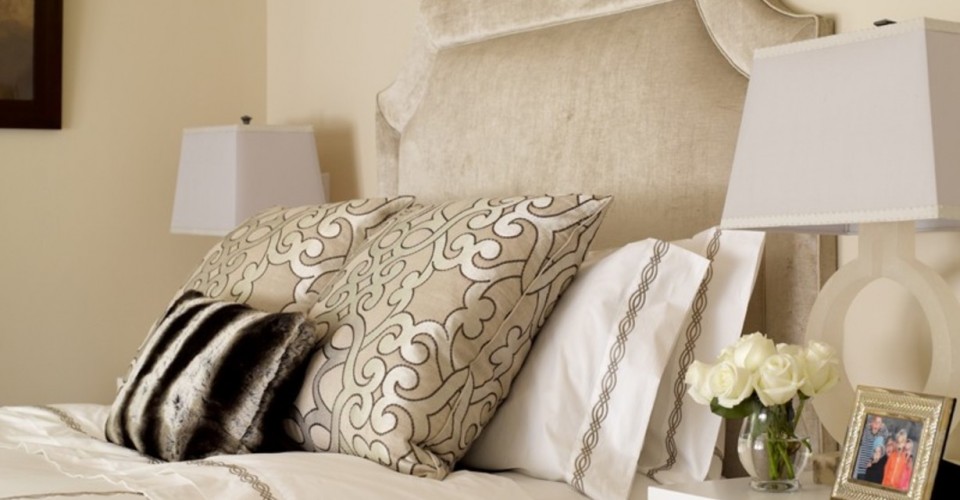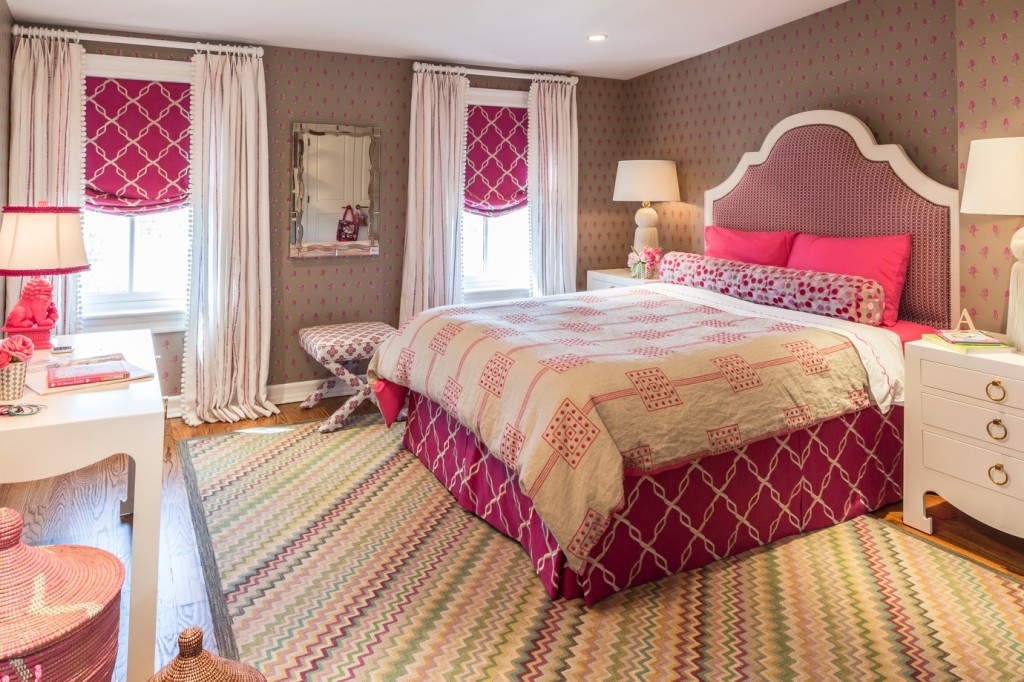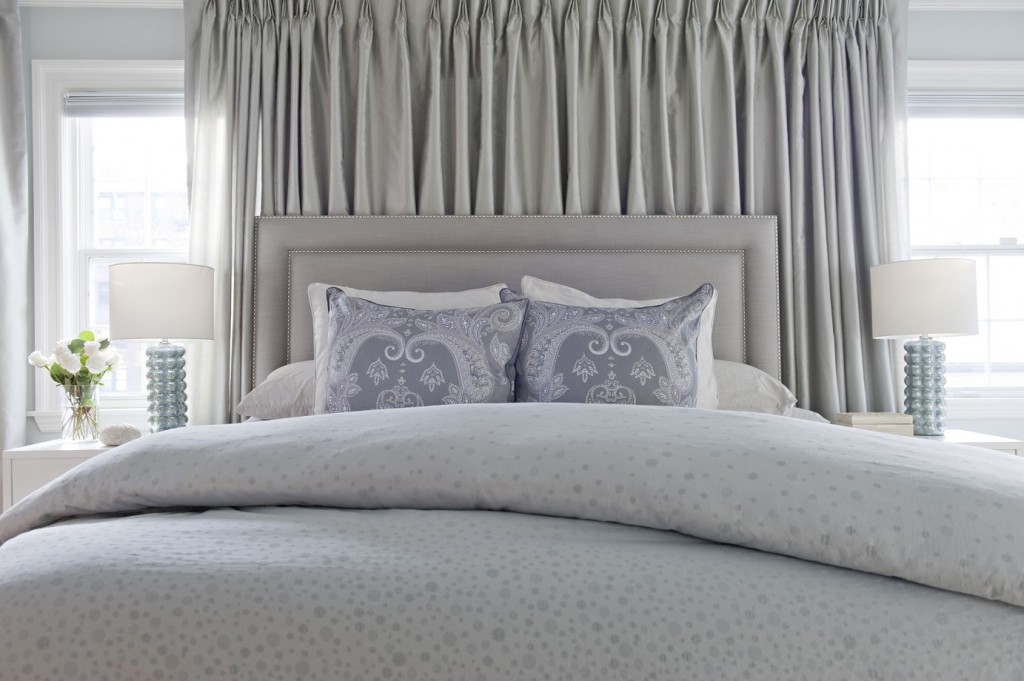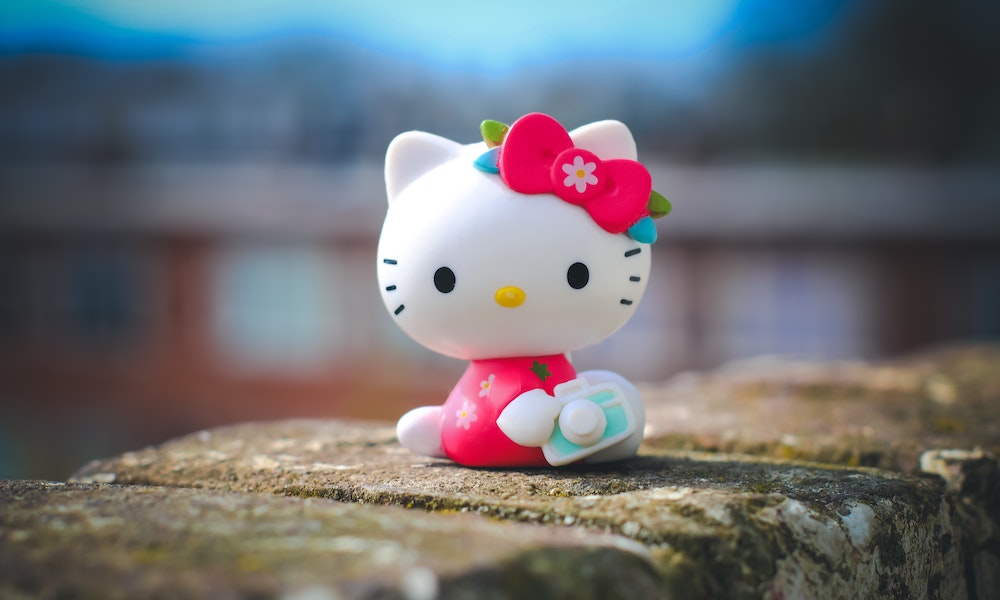Is there really a right way to make a bed? Well, yes and no. There is certainly a traditional way to make a bed, but for every tradition there is an individual who wants nothing more than to break it. Hotels or traditional bedrooms may insist upon a formal bed style. For that look you’ll most likely see a fitted sheet, a top sheet, a quilt or blanket, a coverlet and a duvet or comforter. There will also be plenty of sleeping pillows as well as decorative pillows. A more modern bed may simply entail a fitted sheet, duvet and a few sleeping pillows. Personal comfort and style is key when deciding what is right for your bedroom. Most people prefer slightly cooler temperatures when sleeping (around 65 degrees); having layers on your bed will give you the most options for warmth and comfort.
When it comes to outfitting your bed, make sure you know what look you’re going for by looking at how interior designers style their beds. Read our tips for how to find the best pieces to make your dream bed.
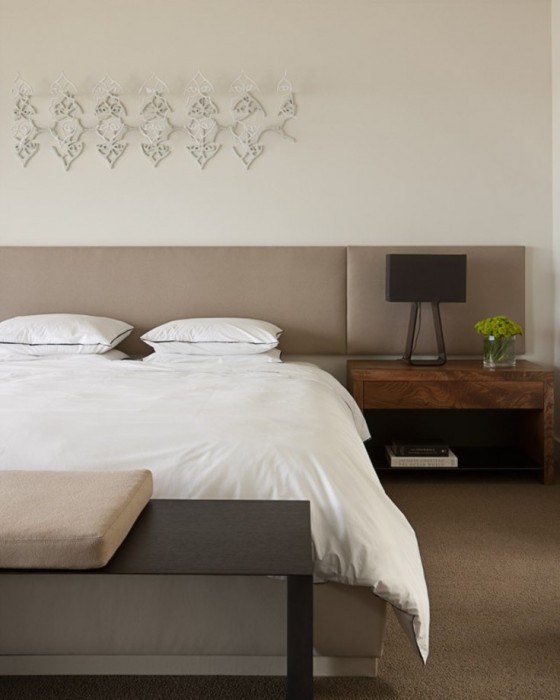
Modern bed styling by DeForest Architects.
The mattress
We all have war stories about trying to find just the right mattress. Buying a new mattress isn’t always set up for success: you have a few moments to lie on the test mattress fully dressed with no pillow and try to determine how it might feel night after night. And mattress brands are adept and making it difficult to compare apples to apples when it comes to materials, inner layers and other mattress features. Some companies offer 100-night testing programs so that homeowners really get a feel for how well they enjoy their new mattress. Other homeowners find their mattress by testing them out in a hotel. When shopping for a new mattress, you’ll want to factor in your budget, any known allergies (or health conditions), and sleeping habits (like your partner tossing and turning a lot). Mattresses are generally designed to last 5-7 years, sometimes longer. But if you keep waking up tired, need to move around a lot to get comfortable, or have had recent changes to your physical health, you may want to start looking for a new mattress. When you do find the right one, ask the dealer how often the mattress should be cared for like turning it on a regular basis (read our tips for how to keep track of this).
Most common mattress types are innerspring and foam. Innerspring mattresses rely upon metal spring coils to create a flexible resistance to the body. Innerspring mattresses may have other features like pillow tops or foam. It’s thought that the more coils a mattress has, the better the comfort. Foam mattresses rely on various layers of latex or non-latex foam. Some manufactures offer foam that helps keep the body cool at night or prevent moisture build-up. Other mattress types are water beds, gel, adjustable, air, horsehair or hybrid. Again, you’ll want to test these out thoroughly and ask about their return policies. All of these mattresses feel quite different from each other, and each type has variations that can make your mattress shopping overwhelming. It’s best to test them out as much as possible and be sure to ask about their return or exchange policies. Be sure you purchase a high-quality mattress pad as it will help keep messes off the mattress.
The boxspring
The boxspring is designed to elevate the mattress off the floor and provide a structured support platform for your mattress. It can also places your mattress higher up off the ground at a more comfortable level. Some bedframes are designed so that a boxspring isn’t necessary. At its simplest, a box spring is a frame made from wood and is wrapped with a breathable fabric; older boxsprings might also have spring coils for support. Sometimes the edges, which are more visible, are wrapped with a padded, decorative fabric. Whether or not you use a box spring with your mattress will depend upon the type of bed frame you have and what your mattress requires. Some mattresses depend upon a well-structured boxspring – it provides the necessary support for the mattress. When you buy a new mattress you should buy a new boxspring as well. Some boxsprings are designed to help elevate the mattress or adjust it into a different shape, much like a hospital bed. When shopping for a mattress, be sure you know what type of bedframe you’ll be using and ask the manufacturer if a boxspring is necessary.
Sheets and bedskirt
It’s easy to become overwhelmed by the sheer number of colors, patterns, fits and types of sheet sets on the market. Even if you know what you want, you’ll want to keep a few things in mind to ensure a good fit.
How thick is your mattress? Some mattresses are thicker (or thinner) than the standard. Be sure you measure (in inches) how thick your mattress is.
Do you need a top sheet? If you’re a traditionalist then you may always make the bed with a fitted and top sheet. But some people who are dedicated to their duvet may forgo the top sheet all together. If this is you, try looking for individual fitted sheets and pillow cases instead of a sheet set.
How many sheet sets should I own? That is entirely up to the individual. Some people like to change the look of their bedroom often and may want plenty of colors, patterns and styles. Or you might want warm flannel sheets in the winter and cool percale in the summer. Some people like to wrap their box spring with an extra fitted or top sheet and add more color to their bed. It’s a good idea to have at least 2 sets: one on the bed and one on the shelf. Keep your sheets organized on the linen shelf by putting all the sheets inside a pillow case so you simply have to pull out the sheet “package.”
Are bedskirts necessary? Again, this is completely up to the individual and may be dictated by your bed frame. Bedskirts or dust ruffles can be great for adding style and substance to the bed, but they can also help hide the boxspring or things being stored under the bed. Bedskirts come in different lengths so before you buy one, make sure you measure the distance (in inches) from the top of the boxspring to the floor.
Duvet covers vs. comforters
A duvet consists of an outer duvet cover and an internal comforter, sometimes made from goose down feathers. A comforter is just one piece with no separate cover. Both serve the same function (to keep you warm at night) but tend to look different. Some people prefer a duvet as it’s generally easier to wash – you just need to remove the outer cover and pop it into the machine. Comforters may be too large and bulky for a standard washing machine – you may need to send it to the laundry mat for washing. Stuffing the comforter inside a duvet cover can be an exercise in frustration but here’s a tip: watch our video for the easiest way to stuff the duvet in 60 seconds.
Thread count
Thread count, or thread per square inch, is how the textile industry measures the fineness (or coarseness) of fabric, like bed sheets and towels. To measure thread count, manufactures take one square inch and measure how many threads go right to left (otherwise known as the width or “weft”) and up and down (otherwise called the length or “warp”), then then add the two numbers together. A piece of fabric with 100 weft and 100 warp threads would equal a thread count of 200. Very often threads are twisted together to form a ply, and this is how some manufactures end up with thread counts of 1000 and higher. If the warp and weft have 250 plies on the warp and 250 plies on the weft, you would end up with 500 plies or a 500 ply count. However, if each thread is counted (and not just the plies) you could say that the material has a thread count of 1000. There is some debate over this issue, as some industry trade groups feel that adding up all the threads within a ply to be misleading to the public. If you can, pay attention to the thread count however it’s also important to pay attention to the rub count, which will help indicate how many rubs it takes to wear a hole in the fabric.
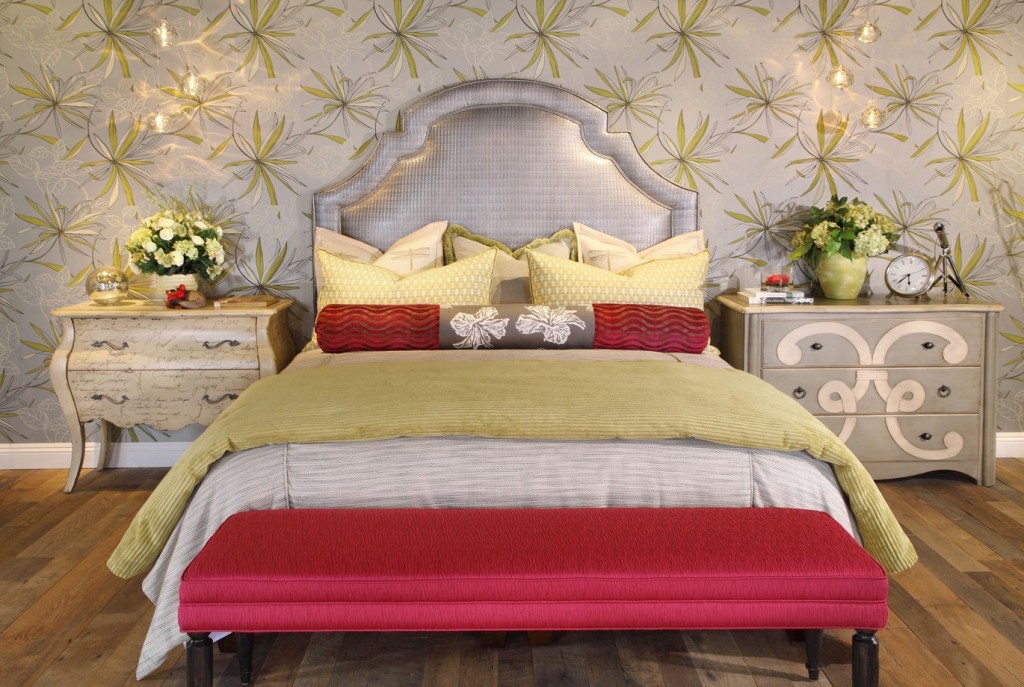
Beautiful pillow display by Veronica Lawrence Interior Design.
Pillows
Historically, pillows have always been a symbol of wealth. They were expensive to produce so naturally, the more pillows a person had, the wealthier they were perceived to be. There are many different types of fills on the market, anywhere from fluffy poly fill you can buy at the craft store, to memory foam or latex, to goose down feathers. Cotton or synthetic, hypoallergenic or down, your own personal preference may dictate the type of fill you choose for your pillows. Some people even like to add a zippered pillow cover (like a mattress pad) that covers the pillow before a pillowcase is put on. Is there a “correct” number of pillows to have on the bed? No, but most of us have a preference when it comes to how many sleeping pillows versus how many decorative pillows. Professionally-styled beds use between seven and nine pillows for display: two to four standard pillows, two Euro pillows, one bolster and two small accessory pillows. When shopping for linens for your pillows, keep in mind these basic pillow shapes and sizes in the U.S.:
- Standard: The standard sleeping pillow is generally 20 inches x 26 inches. Most sheet sets come with standard pillow cases.
- Queen: A queen sleeping pillow is 20 inches x 30 inches.
- King: King sleeping pillows are generally 20 inches x 36 inches
- Euro Square: These large square decorative pillows are 26 inches x 26 inches
- Small Squares & Rectangles: Decorative small square and rectangular pillows come in a wide range of sizes. 16 inches by 16 inches is used very often for square, but so is 18 inches by 18 inches. 17 inches x 17 inches is a common pillow cover size as the fabric used to make them best utilizes the standard fabric width of 54 inches wide. Boudior pillows are about 12 inches by 16 inches.
- Bolster: Bolster pillows are tubular in shape and can come in various lengths. They are great for using on the lower back when sitting up in bed and tend to be rather firm.
Top image credit: Graciela Rutkowski Interiors
